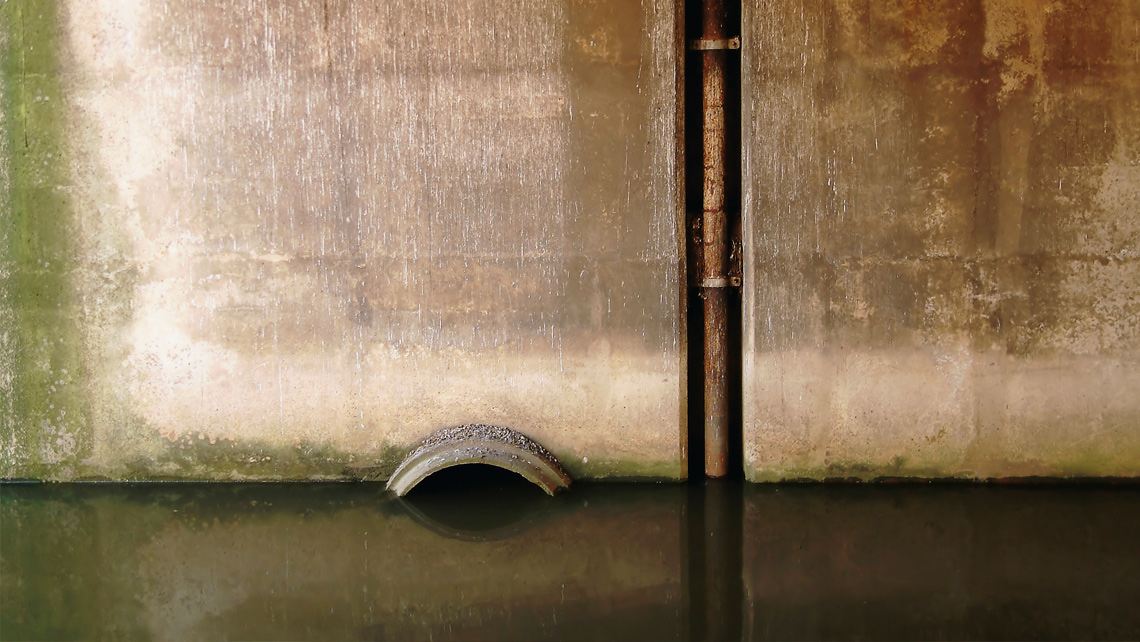Tip 1: understand the source of odor
Hydrogen sulfide is typically the first suspect upon the mention of odor control. However, to gain a comprehensive understanding of odor control, it is necessary to expand the discussion beyond hydrogen sulfide to other sources. There are numerous sources of odor in wastewater systems, including: mercaptans, methylamine, acetone and ammonia. Knowing the dominant source of the nuisance odor is essential for the correct mitigation approach. This, in turn, requires knowledge of the influent systems to the wastewater treatment plant. Odors may be exasperated due to side stream intercepts such as poultry facilities, paint manufacture effluent and food process waste.
Tip 2: understand the bacteria you’re dealing with
Concrete is the most abundant material in wastewater systems and the material that is subject to the greatest risk for corrosion. To understand corrosion in a wastewater collection system, a simple understanding of microbial influenced corrosion (MIC) is required. Bacteria cause corrosion by respiring, producing metabolic by-products and biofilm. Simply, they just live, and that drives MIC. There are a plethora of bacteria forming complex microbial populations in wastewater systems. However, there are several groups of bacteria responsible for MIC that are just living within wastewater systems.
One of the most common bacterial groups involved in the metabolism of sulfur is thiobacteriales, which synthesize energy from the oxidation of inorganic sulfur substances producing sulfide. Within this group of bacteria, there are some bacterial species that break down sulfur containing amino acids such as cystine in urine and keratin, or methionine from caesin. Gelatine and wool are another source of sulfurous proteins. Interestingly, the hydrogen sulfide byproduct now becomes an energy substrate for another group of related bacteria such as thionema and thiobacillus bacteria. Thionema bacteria oxidize hydrogen sulfide to produce elemental sulfur. Thiobacillus thiooxidans oxidize sulfur to sulfate and sulfuric acid. Whether it is the formation of sulfuric acid by rapid oxidation of sulfide in a warm oxic water environment, or by bacteria, sulfuric acid to concrete is equivalent to a hot knife through butter. [A]
Metal oxidizing bacteria are of concern as they are very capable of driving MIC on metals in a process system of the wastewater treatment process. However, as most wastewater systems are primarily constructed with concrete, acid producing bacteria and bacteria that recycle sulfur are of great concern. [B]
Sulfide – the usual suspect
Although there are various sources of odor nuisance and substrate causation of corrosion within wastewater systems, sulfide still dominates many discussions for a good reason. Sulfide, specifically dissolved sulfide, is a dominant factor in understanding odor control and concrete corrosion within wastewater systems. Whilst other approaches to dissolved sulfide control are available, many are just a shotgun approach to provide a bandaid cure. Knowing and understanding the source of the odor is critical for true mitigation, just as knowing and understanding the risk for concrete corrosion is critical for true mitigation.
Solving challenges with 100 years of expertise combined with smart technology
At Kemira, we work with our customers to develop industry-leading technology and chemistry to proactively remediate odor and corrosion while at the same time optimizing chemical usage and energy costs. Sulfide has much greater safety impacts that extend beyond odor and corrosion. Optimization and cost-savings without jeopardizing safety is a key component for our solutions that combine chemistry expertise and real-time monitoring.
Kemira KemConnect™ OCC is an automated solution for controlling odor and corrosion in your sewer and wastewater systems. The solution includes the measurement and online monitoring and control of hydrogen sulphide (H2S), featuring recommendations for optimal dosage points and a customized reporting system. The KemConnect platform allows you to continuously monitor all relevant performance parameters and cost savings in real-time.
Reference:
[A] Microbially Induced Corrosion by Dr. W. Summer, A. Inst. P
[B] Influence of the Distribution of the Manganese Oxidizing Bacterium, Leptothrix discophora, on Ennoblement of 316L Stainless Steel, C. Campbell et al. Corrosion

